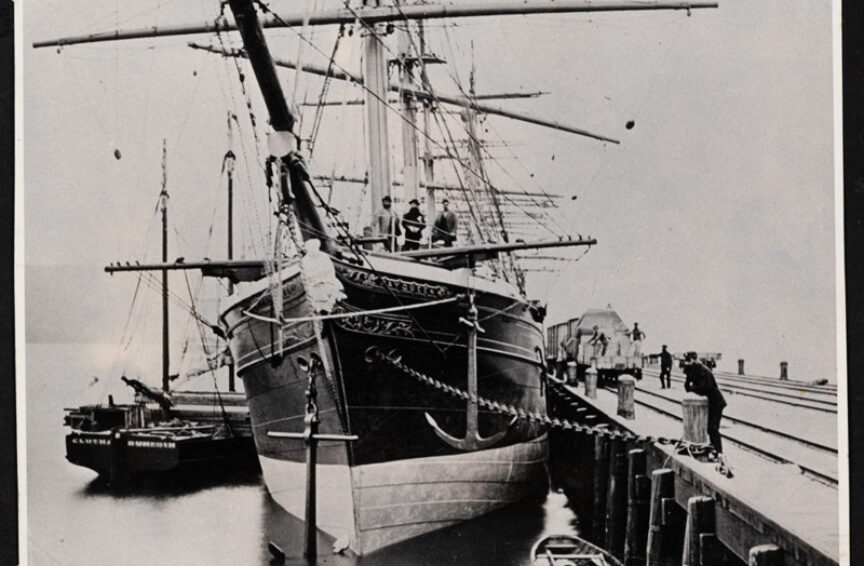PO Box 95
Lyttelton 8841
Te Ūaka recognises Te Hapū o Ngāti Wheke as Mana Whenua and Mana Moana for Te Whakaraupō / Lyttelton Harbour.
The "Darra"
On the quiet western shore of Ōtamahua Quail Island in Whakaraupō harbour one might chance upon the ship graveyard there. One large skeletal wreck in particular stands out, that of the Darra which in its heyday was one of the fastest sailing ships ever built for the fabled Orient Line. Her strong iron frame slowly rusting in the shallows is all that’s left of this once sleek clipper. Built by the Aberdeen UK shipbuilders Alexander Hall and Company, using carvel planks on that iron frame, she had two decks and three masts, was 58 m in length with a 10 m beam, 6.4 m draft, and a displacement of around 1000 Imperial tons.
The Darra launched in June of 1865 and initially sailed the British Indian trade routes as a tea-clipper for several years before departing from London in 1874 with emigrants bound for the Australasian colonies. From there she traded coal and timber to the Americas before settling into the passenger run between the UK and Australia from 1887. It was at this time that she set the London to Adelaide speed record completing the route in just 70 days!
In 1899, while berthed at Sydney harbour, the Darra was gutted by a fire on board, abruptly ending her 35 year sailing career … until she was bought by the Westport Coal Company, towed to Dunedin for a refit, and then on to Lyttelton to serve the port’s steamships as a coal hulk for the next half century.
While she had certainly seen better days, the Darra’s rather comfortable quarters and luxurious saloon had remained untouched by the fire, and thus it was that several families came to call her home over the years. The Eames family lived aboard for some 12 years from around 1904, with father J.P. Eames supervising his coal hulk crew while wife Mary and their three daughters Emily, May, and Else made the most of their floating home. The Eames also hosted pleasant dinner parties for town and harbour guests, with the Darra’s fine old oak dining table ending up many years later in the Lyttelton Museum’s collection.
Finally, in December 1950 the Darra went into the dry dock to be refitted one last time to play the part of the Charlotte Jane for the Centenary Celebration of the first ships’ arrival in Canterbury. After this last hurrah she was stripped and scrapped with the hull beached in the ship graveyard. Three years later the NZ Army practised their explosive demolition skills on her but failed to dismantle the strong iron frame, which remains to this day slowly rusting in the tranquil waters just off the western shore of Ōtamahua Quail Island.
See also http://www.aberdeenships.com/s...

